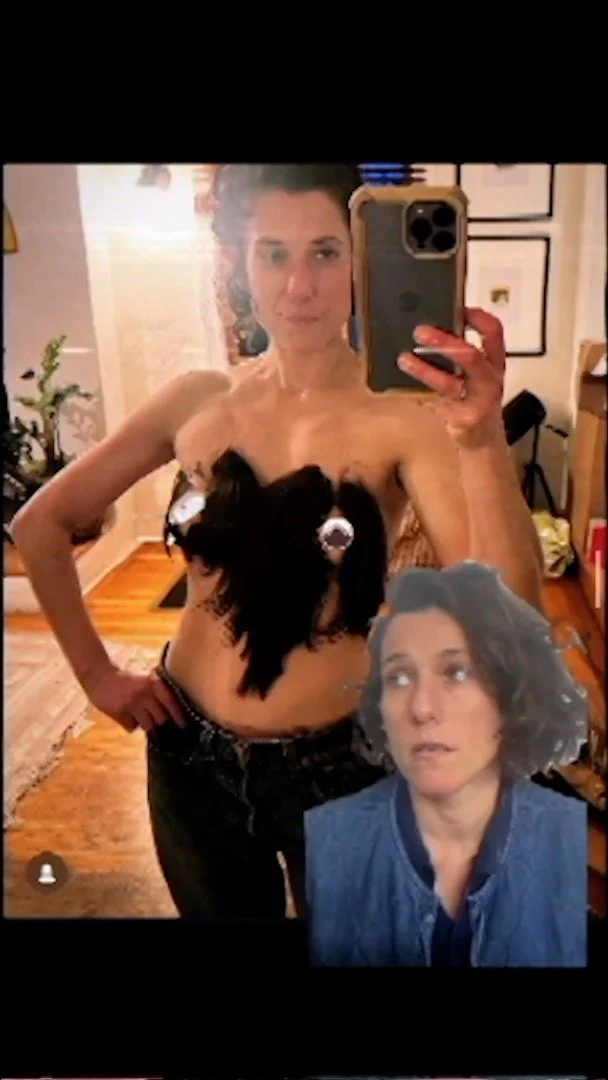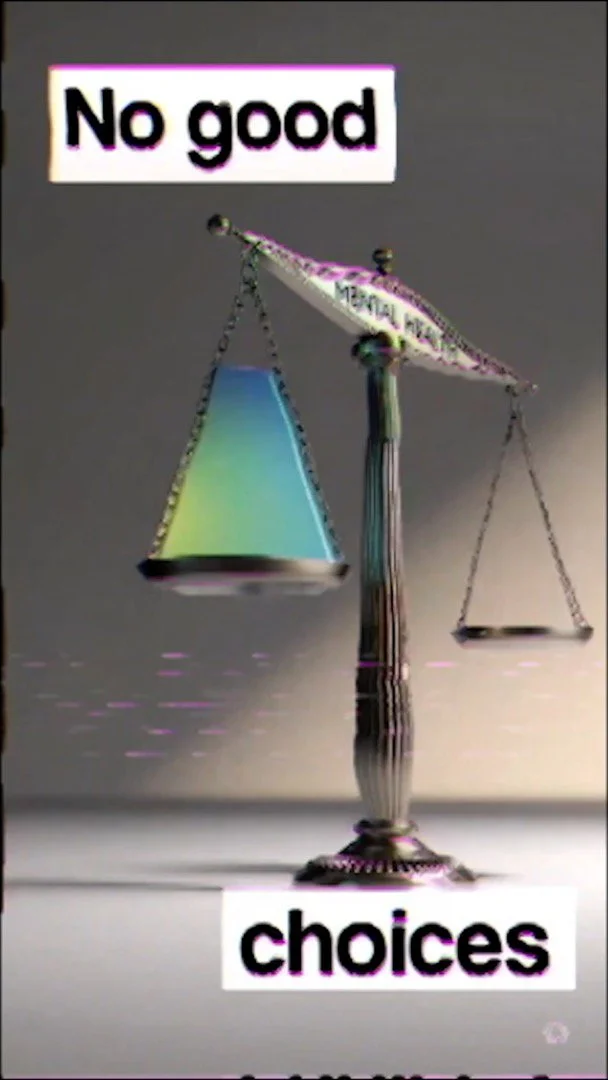Mieke Marple on “Live, Laugh, Lube” and Making Art More Powerful Than the Algorithm
By Cansu Waldron
Mieke Marple is a Los Angeles–based artist and writer whose practice spans painting, generative art, and storytelling. Her work often merges humor, mythology, and personal narrative to explore how cultural archetypes reflect our collective and individual struggles.
In recent years, Mieke has brought a lighter, more playful energy to her practice. After creating The Medusa Collection, a generative NFT series reframing Medusa’s story through a feminist lens, she turned her focus toward humor and healing. Inspired by the comedians in her life, she developed Live, Laugh, Lube, a project that embraces joy, intimacy, and self-awareness with a wink.
Mieke’s art has been exhibited internationally, including at the Museum of Contemporary Art Zagreb and MOCA Westport, and her writing has appeared in The Huffington Post, LA Review of Books, and McSweeney’s. A co-founder of the influential Night Gallery, she has also raised over $1.7 million for organizations like Planned Parenthood LA and Critical Resistance through charity art auctions. Her work can be found in the collections of the Museum of Crypto Art, the Seattle NFT Museum, and the McEvoy Family Collection.
We asked Mieke about Live, Laugh, Lube, her relationship with social media, and her inspirations.
Camirin Farmer (still)
Let’s start with your current project — Live, Laugh, Lube. I love the title. What first inspired you to explore clowns, comedians, and fools as symbols in this generative painting series?
A couple years ago I began to have more clowns and comedians in my life, including comedian Melinda Hill whom I worked with as a social media consultant, and I realized that I wanted to have even more. This came on the heels of my ambitious generative art NFT project—the Medusa Collection—which was about understanding Medusa in light of her oft overlooked sexual abuse by Poisedon and working on a memoir about my bottoming out in Sex and Love addiction as an art dealer. Those were heavy projects. Important for me, but heavy. I wanted to do something fun, yet meaningful. I came up with “Live, Laugh, Lube.”
The project touches on social media, algorithms, and self-esteem — all things we wrestle with daily. What questions were you asking yourself when you began this work?
I’m in multiple 12-step programs and social media is designed to be addictive. Not only addictive but malicious. Leaked documents have shown that Meta can tell when a teenage girl is at her most vulnerable, at which point they target her with weight loss or beauty content. The past eight years, I’ve worked to extricate all toxicity from my life—and yet, and yet—I cannot bring myself to leave social media. I believe my art career will suffer if I do. So the big question is can I have a positive experience with social media? Can I create a project that uses social media, but whose spirit is more powerful than Meta’s exploitative algorithms?
There’s something timeless about the figure of the fool — they reveal truths by exaggerating them. How do you see that idea playing out in your series?
Interestingly, I drew myself as The Fool in 2017 as part of my first Tarot series. So I’ve been interested in this archetype for a long time. In Tarot, The Fool is less about being a jester and more about embarking on a new journey. It is about having Beginner’s Mind or a blissful naivete. I recently read that in medieval times it was believed that people with Down Syndrome and the like were considered the unfinished children of God. They were unfinished because they were God’s favorites and He didn’t want to let them go. Accordingly, they were often invited up from the village to dine with the king and queen. Later, regular folks began faking Down Syndrome qualities just to dine at the king’s table and that’s how the jester was born. I’m much more interested in the fool as someone who sees things clearly because they have not been socialized to do otherwise—the same way my 2 year old daughter does—than in the fool as a wiseass or jokester who pulls a fast one.
What emotions do you hope the series evokes?
All of them.
Has working on “Live, Laugh, Lube” changed how you personally engage with social media?
You know, I didn’t think so at first. The project didn’t cause me to post more or less, or loathe posting more or less. But then, recently, I was hired by one of my comedian collaborators, Dan Greaney, to help him with his Tiktok videos. Dan wrote The Simpsons episode predicting Trump’s presidency and his videos feature him dressed up like Moses, prophesying Trump’s imminent demise. They are funny and the first ones went viral. Never in a million years did I imagine getting hired to work on someone’s social media campaign. I don’t have that many followers myself, and I mostly complain about apps like Instagram, X, Tiktok, etc. However, I feel uniquely suited to work on Dan’s videos because he is doing something similar to “Live, Laugh, Lube” with his posts—which is creating a project (a movement?) whose spirit is more powerful than the algorithms that bind it. So maybe a bigger shift is happening in my personal relationship to social media.
What is a fun fact about you?
I played multiple types of saxophones in middle school (alto, tenor, baritone) and I was inspired to play saxophone by none other than Lisa Simpson.
What else fills your time when you’re not creating art?
My family… and, soon, clown school.





















